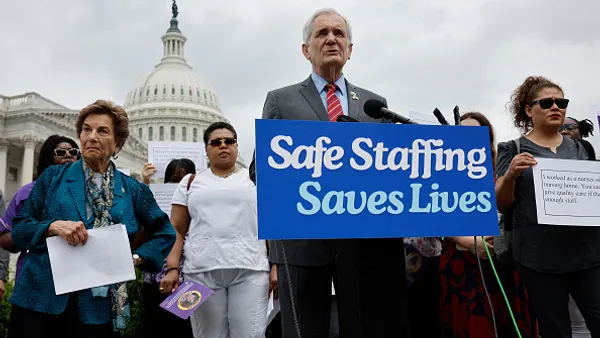Dive Brief:
- Working mothers thrive the most in New England, according to data from WalletHub. Factoring in access to child care, professional opportunities and work-life balance, WalletHub applied the criteria to the 50 states and Washington, D.C.
- Massachusetts, Connecticut, Rhode Island, Minnesota and Wisconsin are WalletHub’s top 5 locations for working mothers. Runners-up include Washington, D.C., Vermont, New Jersey, New York and New Hampshire.
- States that ranked the worst in WalletHub’s line-up are West Virginia, Nevada, Idaho, South Carolina, Alabama, Mississippi and Louisiana, suggesting that the South and Midwest may offer fewer resources to working mothers.
Dive Insight:
Since the beginning of the pandemic, the U.S. workforce has grappled with a mass exodus of parents, particularly women or birthing parents. Childcare-related worker attrition, a phenomenon well-documented by McKinsey and Company, remains a human resource issue. In its latest resource, Women in the Workplace 2021, McKinsey data suggested that women were even more burned out as of late 2021 than they were in 2020. The research firm also observed that burnout was ramping up faster among women as compared to men.
About a third of women respondents told McKinsey they “have considered downshifting their career or leaving the workforce this year,” compared to the one-fourth of women who told McKinsey the same early on in the pandemic.
Employers have been conjuring up a number of ways to better retain parents. Many companies have offered or re-committed to championing parental leave so that workers aren’t forced to choose between caring for their families and nurturing their careers. Labor experts also have called attention to the nuance involved in such considerations, including regard for LGBTQ+ parents who need leave and further attention paid to mothers who are Black and their higher rates of burnout.
Some companies have taken a step further by offering stipends for in-home childcare or daycare. Others still have implemented “returnships” for caregivers — primarily, women or birthing parents — to become reacquainted with the workforce after a years-long childcare hiatus.
One solution managers and HR teams can implement today is to provide parents with flexibility in their workflow and schedules.
“More than three-quarters of senior HR leaders say that allowing employees to work flexible hours is one of the most effective things they’ve done to improve employee well-being, and there are clear signs it’s working,” McKinsey said in its 2021 report. “Employees with more flexibility to take time off and step away from work are much less likely to be burned out, and very few employees are concerned that requesting flexible work arrangements has affected their opportunity to advance.”
The one caveat? Ensure that employees are given clear boundaries along with their flexibility, to thwart an “always-on” approach to work.














